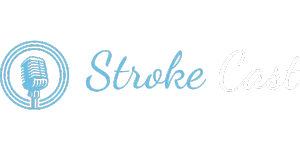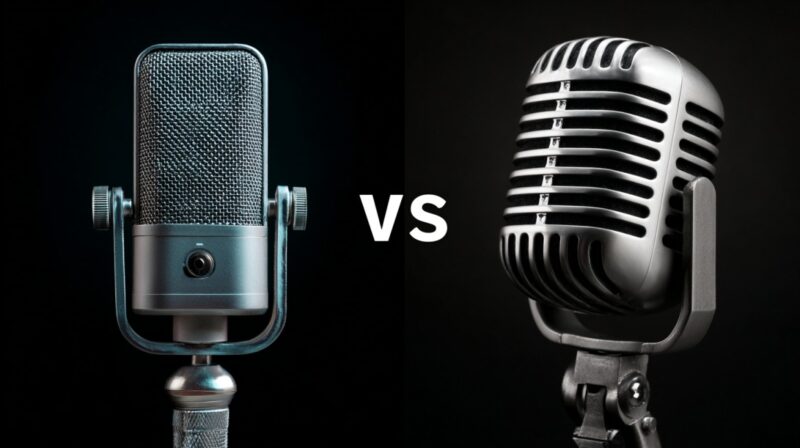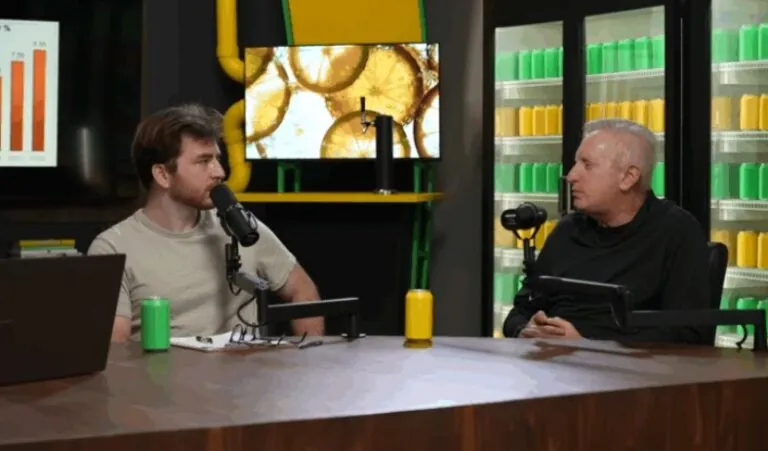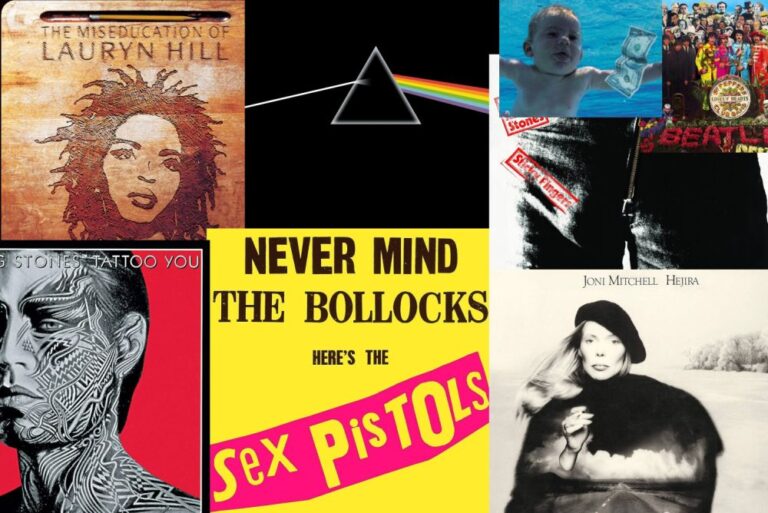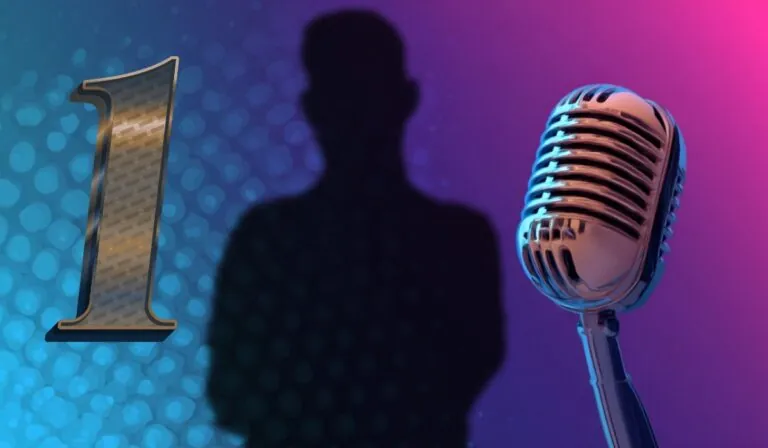Choosing the right microphone is one of the first decisions that shapes podcast audio quality. A well-selected mic determines how clearly and professionally your voice will come through to listeners. Dynamic and condenser mics are two popular types used in podcasting.
The purpose here is to help podcasters match the correct microphone type to their workspace and format, ensuring sound that supports both message and brand.
Table of Contents
ToggleWhat are the Key Differences?
| Microphone Type | Pros | Cons |
|---|---|---|
| Dynamic Microphones | Durable and travel-ready, lower cost, no external power needed, rejects background noise well | Lower sensitivity, less detail in high frequencies |
| Condenser Microphones | Crisp sound reproduction, high sensitivity for vocal clarity, ideal for studio vocals | Fragile and less portable, requires phantom power or battery, picks up environmental noise easily |
Dynamic microphones feature a simpler construction, using electromagnetic induction to capture sound. Built to withstand wear, they hold up well under rugged use and travel.
Condenser microphones rely on a capacitor and require an external power source, typically phantom power. They offer higher sensitivity and can capture more subtle nuances in vocal tones.
Sensitivity plays a major role in microphone choice. Dynamic mics pick up less ambient noise, making them ideal for untreated rooms. Condensers, on the other hand, shine in acoustically controlled environments.
Power requirements also vary. Condensers need phantom power, which not all interfaces supply, while dynamics operate without it. Cost is another factor. Dynamic mics generally offer good quality at lower prices, while condensers often come with a higher price tag due to their internal complexity.
Choosing Based on Podcasting Environment
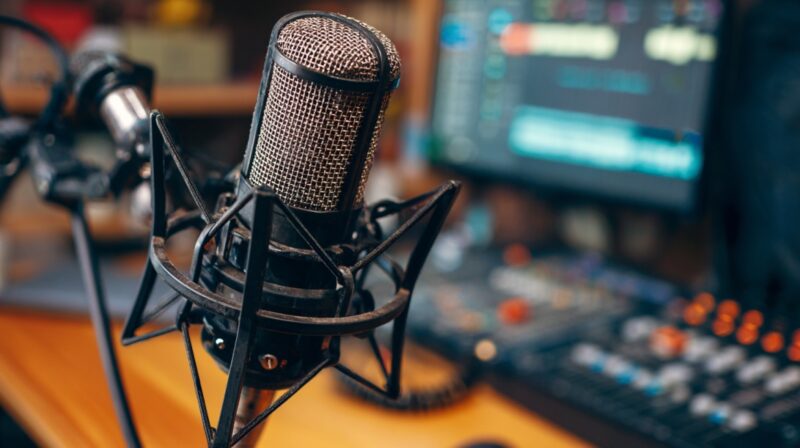
Podcasting success depends not just on content but on how clearly your voice reaches listeners.
Mic performance changes dramatically with surroundings. Choosing equipment that fits your environment ensures consistent, professional-sounding results.
Home Office or Untreated Spaces
Rooms with bare walls, windows, or tiled floors reflect sound and introduce reverb. In such environments, condenser microphones pick up unwanted background elements, making editing a nightmare. Dynamic microphones are far more forgiving, thanks to their directional pickup and low sensitivity.
For podcasters recording at home, dynamic mics reduce distractions caused by mechanical keyboards, HVAC systems, and outside traffic. These mics focus tightly on the speaker’s voice and minimize ambient noise.
- Shure SM58: Known for durability and vocal clarity
- Rode PodMic: Tailored for voice-based broadcasting with a compact frame
Key advantages for untreated spaces:
- Rejects environmental noise
- Handles poor acoustics better
- No need for soundproofing panels or foam treatment
Treated Studio Spaces
When working in a space with soundproof panels, carpets, and minimized echo, condenser microphones shine. They offer greater frequency detail and nuance, capturing voice texture with impressive fidelity.
These setups benefit professionals who want studio-grade audio with minimal post-processing. Acoustic treatment allows condenser mics to perform without amplifying distractions, giving recordings a polished edge.
- Rode NT1: Exceptionally quiet with a natural vocal presence
- Blue Yeti: Offers multiple patterns and crisp response in USB format
Advantages of condenser mics in studio settings:
- Captures fine vocal detail
- Enhances tonal richness without artifacts
- Works well in isolation booths or controlled rooms
Field and On-Location Recording

Outdoor locations and busy interiors pose challenges like unpredictable noise and shifting sound levels. Dynamic microphones, especially handheld models, prove essential for handling such conditions.
Their noise rejection and rugged build make them suitable for mobile interviews, live events, or vlogs recorded in uncontrolled environments. Compact dynamic mics handle drops, wind gusts, and uneven acoustics with resilience.
- Samson Q2U: Dual USB/XLR output for flexibility
- Shure SM58: Trusted globally for its robustness and reliable vocal pickup
Field-ready features to prioritize:
- Built-in noise rejection
- Portability and durability
- Strong vocal focus despite environmental chaos
Remote/Virtual Interviews
Virtual interviews often happen in less-than-perfect acoustic spaces. In a quiet room with minimal background activity, a condenser mic offers clarity and presence that enhances dialogue.
However, if interruptions like street noise, pets, or shared spaces are an issue, dynamic microphones come to the rescue. They isolate the speaker’s voice and maintain audio quality, even with occasional background disruptions.
For remote podcasters, choose based on your specific noise profile. Placement also matters. Speaking into a mic off-axis or too far away reduces sound quality regardless of type.
- Condenser mic in isolated rooms: Blue Yeti or Audio-Technica AT2020
- Dynamic mic in noisy setups: Samson Q2U or Rode PodMic
Key considerations for remote recording:
- Voice clarity during video calls
- Compatibility with USB or audio interface
- Consistent mic distance and positioning
Mic Patterns and Use Cases
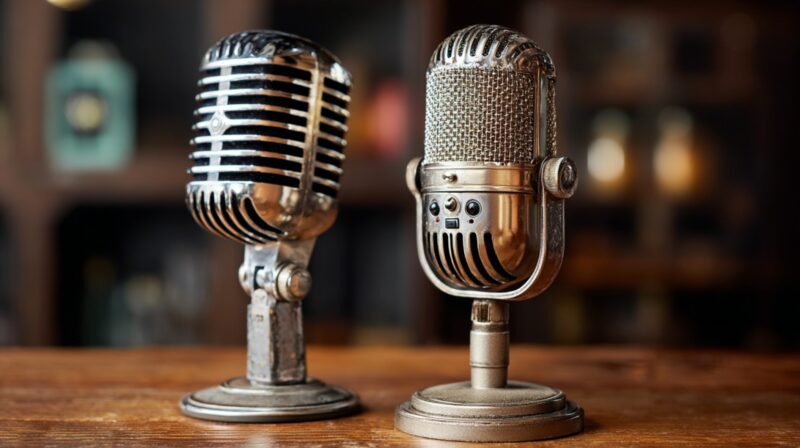
Selecting the right polar pattern can drastically improve audio quality by aligning mic behavior with podcast format.
Polar patterns control how a microphone responds to sound coming from different directions. Each has specific strengths based on layout, number of speakers, and background noise levels.
Below are the most common polar patterns used in podcasting:
| Polar Pattern | Description | Best Use Case |
|---|---|---|
| Cardioid | Focuses on sound directly in front of the mic while reducing pickup from the sides and rear | Solo podcasters seeking a clean vocal signal with minimal room interference |
| Omnidirectional | Captures sound equally from all directions | Roundtable discussions with multiple speakers around the mic |
| Bidirectional | Picks up audio from the front and back while rejecting sound from the sides | Face-to-face interviews using a single microphone |
| Supercardioid | Narrower front pickup with slightly more rear sensitivity compared to cardioid | Noisy environments where controlled directionality is important |
Each podcast format benefits from specific combinations of mic types and polar patterns. Here are a few examples for clarity:
| Podcast Format | Recommended Setup |
|---|---|
| Solo Podcasting | Cardioid dynamic microphone to reduce ambient noise and deliver focused vocals. Ideal for creators working alone in untreated spaces. |
| Co-hosted Shows | Two cardioid microphones to isolate each speaker. For one-mic setups, a bidirectional condenser can work if background noise is low. |
| Interview Format | Bidirectional condenser placed between interviewer and guest in quiet environments. |
| Roundtable Discussions | Omnidirectional microphone to capture all voices equally. |
Testing microphone patterns with your intended layout can help identify what provides the best clarity for your use case.
Popular Podcasting Mic Recommendations
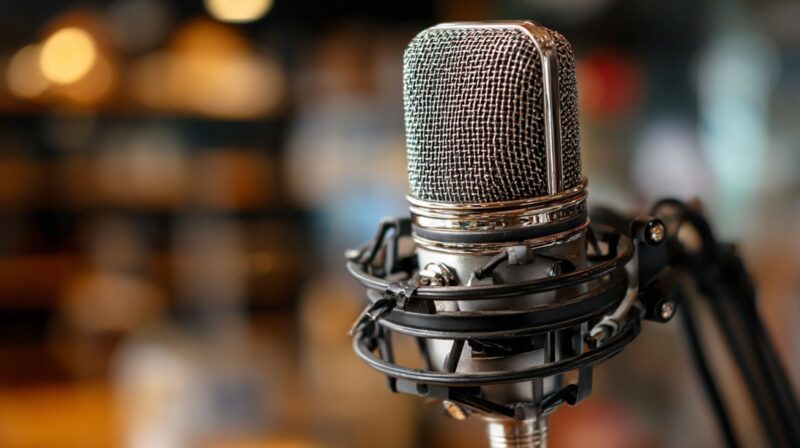
To help narrow down mic selection, here are widely respected options divided into dynamic and condenser categories. These examples cover a range of budgets and setups.
Dynamic Microphones
Each of the following offers clear voice capture with reliable noise rejection:
- Shure SM7B: Often found in professional studios. Delivers warm tone with excellent isolation. Suited for both vocal-heavy podcasts and music production.
- Samson Q2U: Great for beginners and mobile setups. Features both USB and XLR outputs, allowing flexible use with or without an audio interface.
- Rode PodMic: Built specifically for podcasters. Balanced sound profile with an internal pop filter to reduce plosives.
Condenser Microphones
Ideal for treated spaces or users who want every nuance captured:
- Blue Yeti: A USB condenser with selectable polar patterns including cardioid, omnidirectional, and bidirectional. Versatile and plug-and-play ready.
- Audio-Technica AT2020: Known for clean and crisp vocal capture. Requires an audio interface and phantom power, but delivers consistent studio-quality results.
- Neumann U87: Premium microphone for those prioritizing audio excellence. Frequently used in high-end recording environments due to its tonal precision and depth.
Each mic excels in different setups. Matching a model to your voice and room conditions will yield better long-term satisfaction than simply choosing based on popularity.
Final Considerations Before You Buy
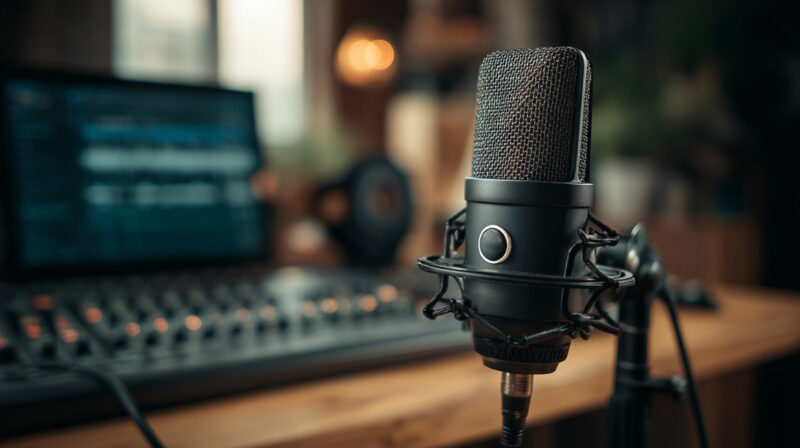
Choosing a microphone requires looking at more than just sound quality. Several practical and technical factors come into play that can impact your recording experience long-term.
Before committing to a purchase, consider how a microphone fits into your workflow, gear setup, and content style.
A few key factors to evaluate include:
Budget
Prices range from entry-level mics under $100 to professional-grade models exceeding $500. Spending more does not always guarantee better results.
Focus on what aligns with your goals and audience expectations. Factor in any accessories you might need, like boom arms, pop filters, or audio interfaces.
Portability
Traveling with gear introduces wear, so think about how often you’ll move or pack your mic.
Some condenser models are fragile and not well-suited for transport, while most dynamic mics can take more abuse. If podcasting on the road or in shared spaces, a compact and rugged mic saves trouble.
Compatibility
Connection type matters. USB microphones plug directly into computers and offer a plug-and-play option perfect for beginners or solo setups.
XLR mics, on the other hand, require an audio interface or mixer.
While XLR setups offer more control and upgrade potential, they also add cost and complexity. Match your mic with your current gear and technical comfort.
Frequency Response and Voice Matching
Each microphone emphasizes certain parts of the frequency range. Some boost low-end warmth, while others highlight crisp highs. Depending on your vocal range, a mic might make your voice sound fuller or thinner.
Those with deeper voices often benefit from a mic with smooth bass handling. Bright, trebly voices might do better with mics that don’t exaggerate highs.
Try Before You Buy
Whenever possible, audition microphones with your own voice. Stores with display units or online shops with return policies can help. Listening to samples recorded by others may offer clues, but voice tone, pitch, and cadence vary.
A mic that flatters one person might dull another’s sound. Testing gear in your actual space with your natural speaking voice gives the clearest picture.
